Procura um bico indestrutível?
Experimente o Vanadium Nozzle da marca Slice Engineering (USA).
GARANTIA VITALICIA contra abrasão.
Com uma classificação mínima de dureza 64 Rockwell C (Vickers HV 910), é praticamente impossível riscar o mesmo com qualquer tipo de filamento 3D existente no mercado.
Ideal para impressão 3D com materiais abrasivos como filamento de Carbono, Glow Brilha no escuro, Bronze, prata, metalizados, etc.
O Vanadium Nozzle possui um revestimento polifóbico repelente para reduzir o acúmulo de plástico no bico.
Vantagens:
- Menos acúmulo, principalmente de materiais pegajosos e cheios no cone do bico
- Confiabilidade aprimorada da primeira camada; o revestimento liso tem uma tendência reduzida a "arrastar" o material, principalmente em cantos afiados onde as faixas podem descascar
- Camadas superiores lisas e lisas com acabamento vítreo como resultado da disposição suave do material
- Limpeza mais fácil dos bicos, o pouco material que adere é facilmente limpo com uma toalha de papel deixando um bocal muito limpo.
Compatível com E3d V6, Mosquito, etc
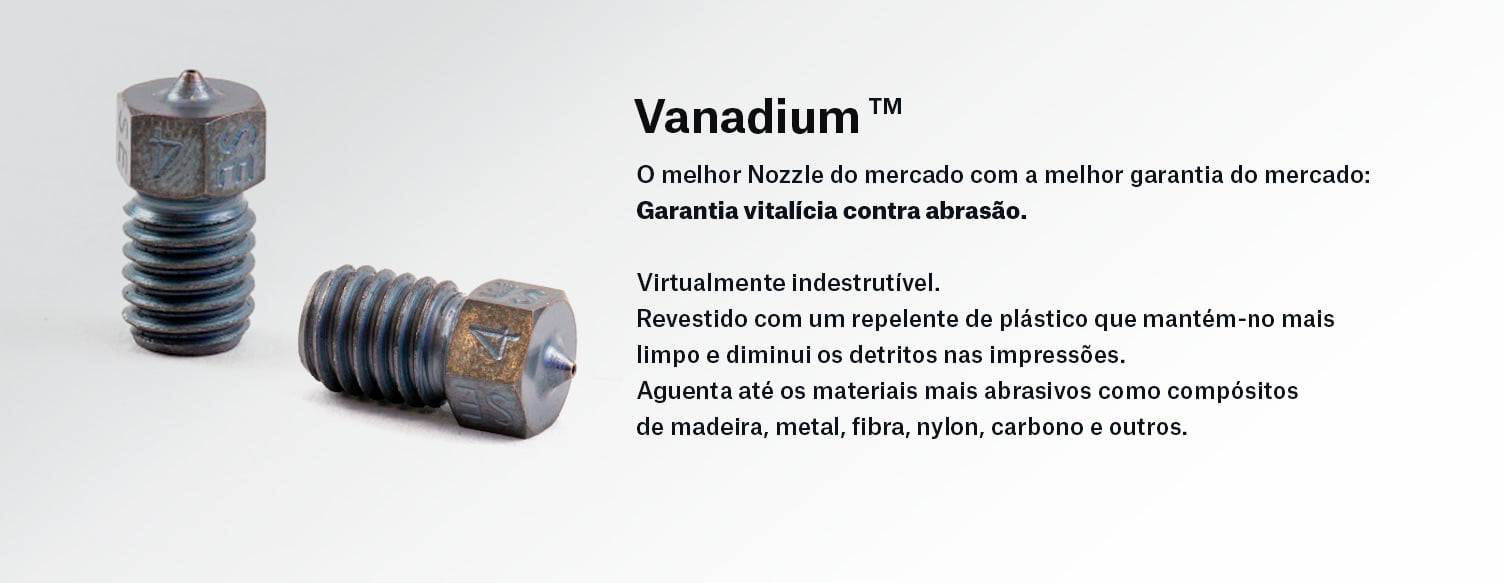

ProtoPasta é uma empresa situada nos Estados Unidos da América, de produção de filamentos para impressão 3D de alta qualidade.
Caracterizada pelos rolos feitos em cartão, esta marca é mundialmente famosa por ser especializada em materiais como PLA e ABS modificados com outros materiais, como o PLA Magnético; o PLA Condutivo; PLA de fibra de carbono; HTPLA de cobre, latão ou bronze; ou o ABS-PC.
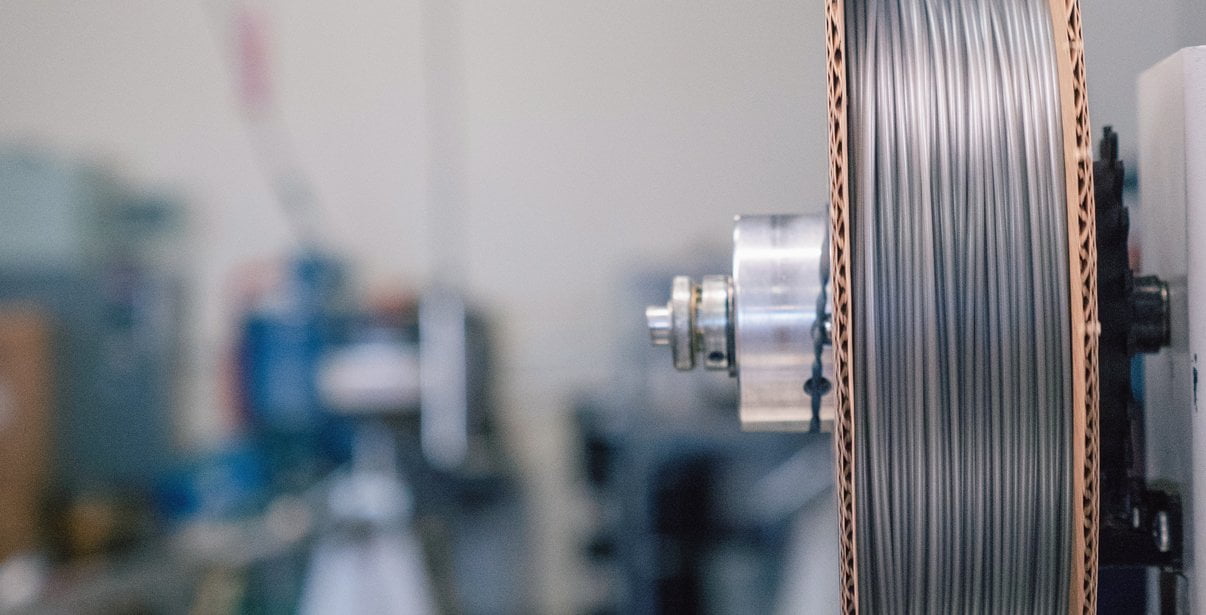
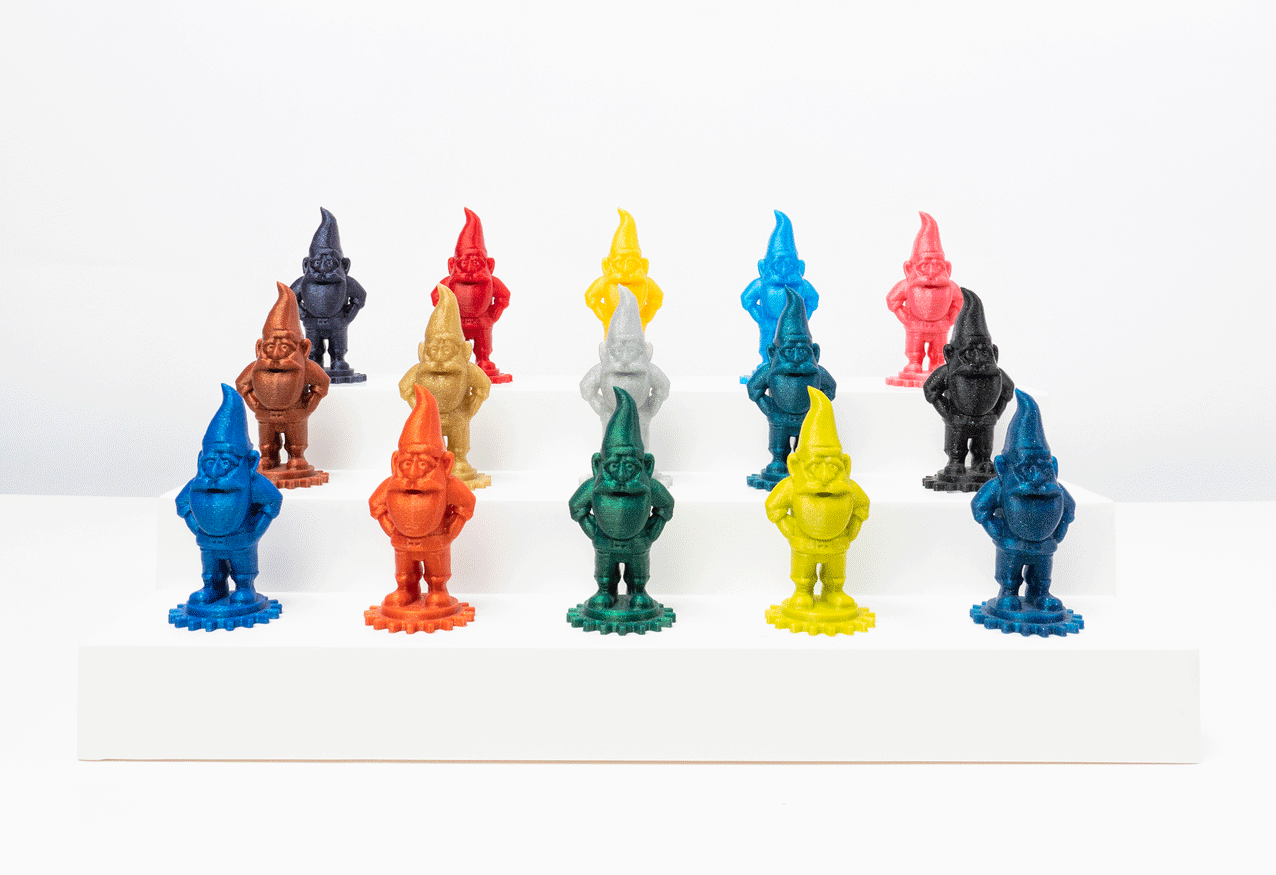
No sparkles or fancy finishes here, just high clarity SK GE300 PETG (also know as CPE or co-polyester) resin extruded into filament and spooled onto cardboard spools to minimize environmental impact and maximize value.
Many filaments are wound onto wasteful plastic spools because it's cheap and easy, but cardboard is sturdy enough for single use, saves shipping weight, and is easily recycled when done!
Protopasta filament is first dried, then extruded without moisture using air cooling for exceptional quality.
Minimal waste, no water use, and no additives because less is more when meeting basic needs.
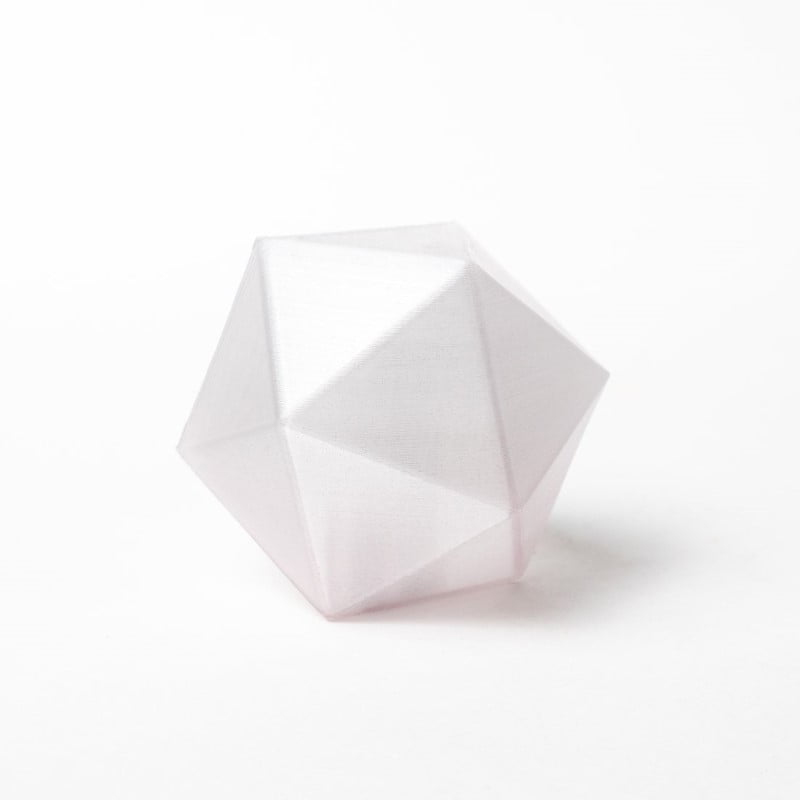
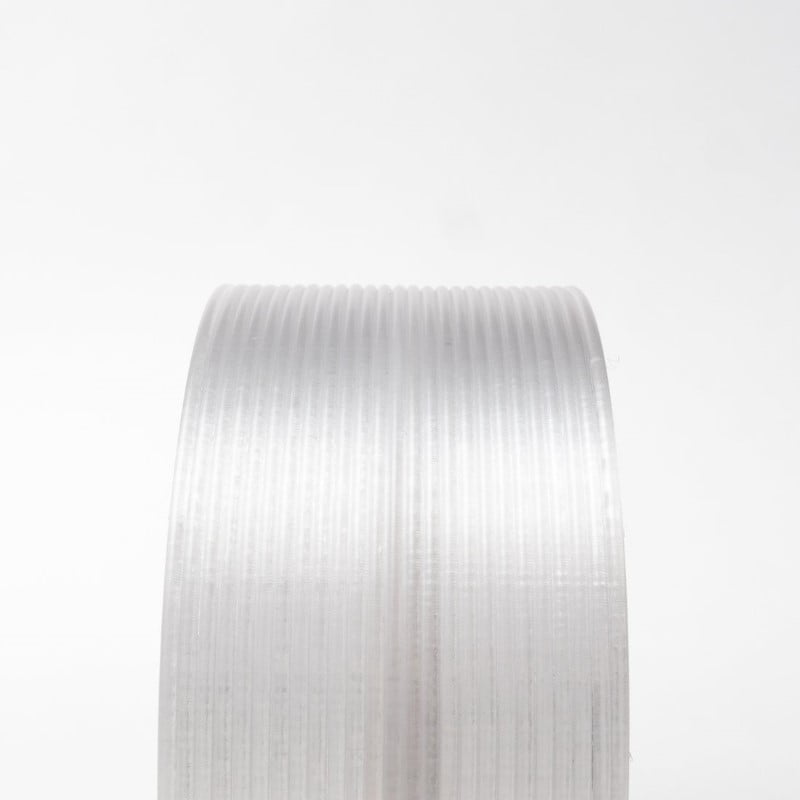
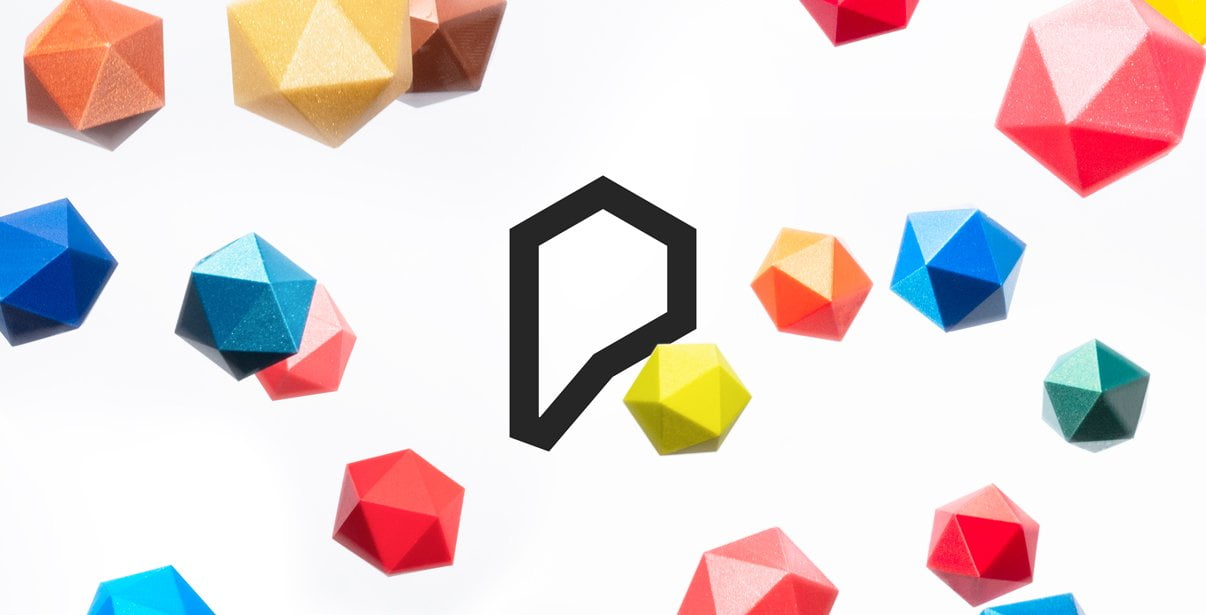
We've created this page to bring you a premium PLA and HTPLA printing experience that rivals our premium material. Follow below to improve your 3D printing experience. In other words, here's your shortcut to awesomeness with pasta. If at the end of this document you have questions or need assistance, please contact us at [email protected].
Loose coils can be very tricky to manage. Going cowboy on your spool handling can quickly end up in a frustrating, tangled mess. Keep your loose coils wrangled with a spool holder like masterspool for a more trouble-free experience. Find out more about loose coil handling in Keith's blog post.
And for spooled filament, never let go of the loose end. When not in the printer extruder, tuck it away in the cardboard spool's corrugation! Also, avoid sharp bends and excessive force when loading filament into your printer.
At Proto-pasta, we make high quality filament. We aspire to make exceptional results easy, but a positive result is very much dependent on your hardware, set-up, adjustments, and process parameters. Matching hardware with process and material for a positive experience is not always straight-forward, but you can start by pairing the following settings with your printer for a good starting point, then tune or troubleshoot as required.
Volume flow rate together with temperature dictates how melted the material is. This is hardware & condition dependent based on hot end, nozzle & extruder type, material & manufacturer as well as layer fan type, position & settings. Extrusion width, layer thickness & speed changes affect volume flow which may change required/desired temperature.
Post your prints & tag us @Proto_pasta on Twitter and Instagram. Need more help? Consider typical pitfalls and fixes below.
We visited Joel and ended up with a helpful video on the subject:
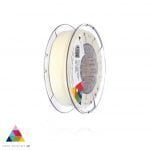
Para uma correcta manutenção da sua impressora 3D, recomendamos sempre que trocar de material de filamento 3D, a efectuar uma purga com filamento especial de limpeza.
Desta forma garante que não ficam vestígios de material nas paredes do nozzle, evitando o acumular de crosta que é criado sempre que efectua trocas de material.
Com este produto evita problema como "clogs" e "jams" e fará com que o seu nozzle mantenha-se sempre limpo, durando muito mais tempo.
Poderá encontrar a partir de 1.49€ no seguinte LINK
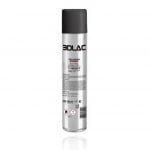
Para obter maior aderência à superfície da sua impressora 3D recomendamos a aplicar 3DLAC na base da plataforma.
Poderá encontrar no seguinte LINK
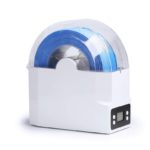
Este material é altamente higroscópico, absorvendo rapidamente a humidade do ar passados poucos minutos após aberto, impossibilitando desta forma a correcta impressão 3D do mesmo. O resultado das impressões 3D de materiais com humidade tendem a ser frágeis e de acabamento irregular ou em certos casos, torna-se simplesmente impossíveis de imprimir.
Deverá de usar soluções de caixas fechadas com dessecante como sílica ou caixas próprias secadoras de filamento.
Poderá encontrar no seguinte LINK
Download:
Technical and Safety Data Sheet
50g- Rolo
PETG Back-to-basics Clear GE300 - Cor
1.75mm (+-0.05mm) - Espessura / Tolerância de diâmetro
Fácil - Facilidade de Impressão

ProtoPasta é uma empresa situada nos Estados Unidos da América, de produção de filamentos para impressão 3D de alta qualidade.
Caracterizada pelos rolos feitos em cartão, esta marca é mundialmente famosa por ser especializada em materiais como PLA e ABS modificados com outros materiais, como o PLA Magnético; o PLA Condutivo; PLA de fibra de carbono; HTPLA de cobre, latão ou bronze; ou o ABS-PC.


Protopasta Polycarbonate-ABS Alloy is an incredibly tough material designed for strong, resilient parts.
Properties are excellent and greatly improved over standard ABS.

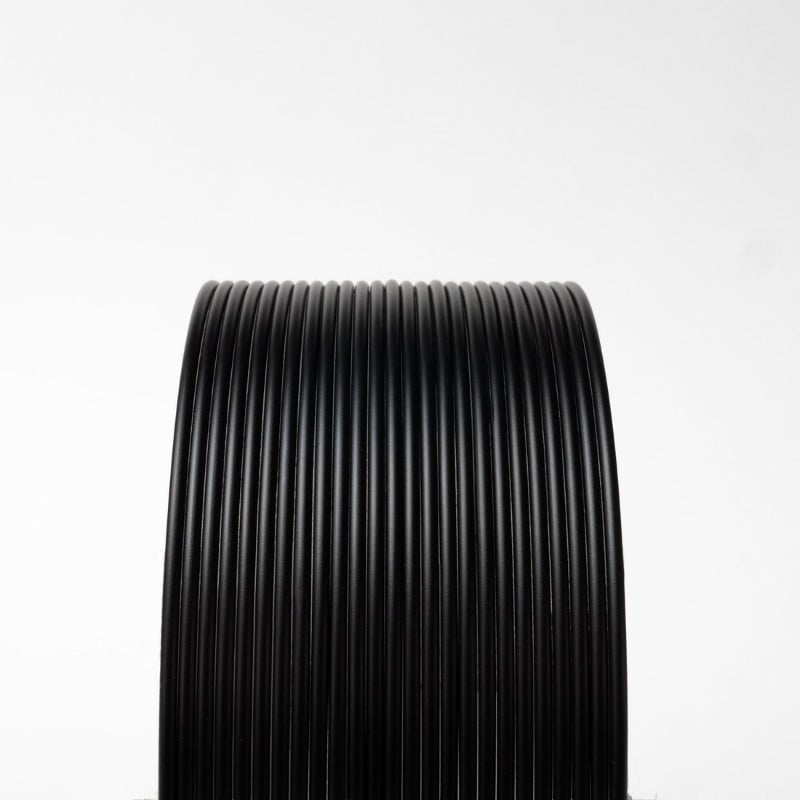
Processing is more challenging. For best results, a heated bed is required to control warpage and improve layer adhesion. Cross-sectional area should be minimized.
PC-ABS is moisture sensitive.
Even when stored in a bag with desiccant, drying in an oven for ~ 1hr at 85C-95C may be required for bubble free high strength prints.
In our experience, good results are achieved when printing small parts at 270-290C on a heated bed at 110C up to 140C.
For larger prints with good layer adhesion and minimal distortion, an enclosure is ideal.

A fan favorite, our Polycarbonate-ABS (PC-ABS) Alloy is an incredibly tough material designed for strong, resilient parts.
This unique material provides vast improvements (over standard ABS) in heat deflection, impact resistance, rigidity, and flexibility.
What are the hardware requirements?
PC-ABS is a high performance material that produces excellent prints, but it is a finicky material prone to warping during the printing process if temperatures are not consistent.
A heated bed (120° is optimal) and 260°+ hot-end are required, an enclosure to is highly recommended.
How should I store it?
Our PC-ABS filament is very moisture sensitive and should be kept bagged with desiccant. Drying in an oven at 85-95° C for an hour may be required for good printing.
The filament is very tough and easy to feed into the printer.
Print Settings
You will have to play around with printer settings to determine what works best on your machine, but start with your heated bed at 120° C and hot end at 260° C and go from there.
Layer adhesion can be an issue if the part is large or the temperature is too low.
We have had good success printing parts ~60mm long at 260°-280° C using a .5mm nozzle and direct-drive spring loaded pinch-roll style extrusion head.
A heated bed set to 120 C will help warpage and layer adhesion on larger/thicker parts.
Density:
1.13 g/cm3 (1130 kg/m3)
Parameters:
Bed Temp (REQUIRED): 120°+ C
Hot End Temp: 260 – 280° C
Full enclosure recommended

Para uma correcta manutenção da sua impressora 3D, recomendamos sempre que trocar de material de filamento 3D, a efectuar uma purga com filamento especial de limpeza.
Desta forma garante que não ficam vestígios de material nas paredes do nozzle, evitando o acumular de crosta que é criado sempre que efectua trocas de material.
Com este produto evita problema como "clogs" e "jams" e fará com que o seu nozzle mantenha-se sempre limpo, durando muito mais tempo.
Poderá encontrar a partir de 1.49€ no seguinte LINK
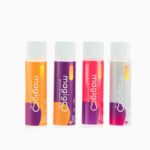
Este material é considerado de difícil aderência à superfície da plataforma de impressão 3D de vidro ou PEI. Para evitar problemas de warpping e de aderência das peças, recomendamos a aplicar potenciador de aderência especial para PC Policarbonato.
Poderá encontrar no seguinte LINK

Este material é altamente higroscópico, absorvendo rapidamente a humidade do ar passados poucos minutos após aberto, impossibilitando desta forma a correcta impressão 3D do mesmo. O resultado das impressões 3D de materiais com humidade tendem a ser frágeis e de acabamento irregular ou em certos casos, torna-se simplesmente impossíveis de imprimir.
Deverá de usar soluções de caixas fechadas com dessecante como sílica ou caixas próprias secadoras de filamento.
Poderá encontrar no seguinte LINK
Download:
Technical and Safety Data Sheet
50g- Rolo
High Temperature Polycarbonate-ABS Alloy - Cor
1.75mm (+-0.05mm) - Espessura / Tolerância de diâmetro
Difícil - Facilidade de Impressão

ProtoPasta é uma empresa situada nos Estados Unidos da América, de produção de filamentos para impressão 3D de alta qualidade.
Caracterizada pelos rolos feitos em cartão, esta marca é mundialmente famosa por ser especializada em materiais como PLA e ABS modificados com outros materiais, como o PLA Magnético; o PLA Condutivo; PLA de fibra de carbono; HTPLA de cobre, latão ou bronze; ou o ABS-PC.


Protopasta Polycarbonate-ABS Alloy is an incredibly tough material designed for strong, resilient parts.
Properties are excellent and greatly improved over standard ABS.


Processing is more challenging. For best results, a heated bed is required to control warpage and improve layer adhesion. Cross-sectional area should be minimized.
PC-ABS is moisture sensitive.
Even when stored in a bag with desiccant, drying in an oven for ~ 1hr at 85C-95C may be required for bubble free high strength prints.
In our experience, good results are achieved when printing small parts at 270-290C on a heated bed at 110C up to 140C.
For larger prints with good layer adhesion and minimal distortion, an enclosure is ideal.

A fan favorite, our Polycarbonate-ABS (PC-ABS) Alloy is an incredibly tough material designed for strong, resilient parts.
This unique material provides vast improvements (over standard ABS) in heat deflection, impact resistance, rigidity, and flexibility.
What are the hardware requirements?
PC-ABS is a high performance material that produces excellent prints, but it is a finicky material prone to warping during the printing process if temperatures are not consistent.
A heated bed (120° is optimal) and 260°+ hot-end are required, an enclosure to is highly recommended.
How should I store it?
Our PC-ABS filament is very moisture sensitive and should be kept bagged with desiccant. Drying in an oven at 85-95° C for an hour may be required for good printing.
The filament is very tough and easy to feed into the printer.
Print Settings
You will have to play around with printer settings to determine what works best on your machine, but start with your heated bed at 120° C and hot end at 260° C and go from there.
Layer adhesion can be an issue if the part is large or the temperature is too low.
We have had good success printing parts ~60mm long at 260°-280° C using a .5mm nozzle and direct-drive spring loaded pinch-roll style extrusion head.
A heated bed set to 120 C will help warpage and layer adhesion on larger/thicker parts.
Density:
1.13 g/cm3 (1130 kg/m3)
Parameters:
Bed Temp (REQUIRED): 120°+ C
Hot End Temp: 260 – 280° C
Full enclosure recommended

Para uma correcta manutenção da sua impressora 3D, recomendamos sempre que trocar de material de filamento 3D, a efectuar uma purga com filamento especial de limpeza.
Desta forma garante que não ficam vestígios de material nas paredes do nozzle, evitando o acumular de crosta que é criado sempre que efectua trocas de material.
Com este produto evita problema como "clogs" e "jams" e fará com que o seu nozzle mantenha-se sempre limpo, durando muito mais tempo.
Poderá encontrar a partir de 1.49€ no seguinte LINK

Este material é considerado de difícil aderência à superfície da plataforma de impressão 3D de vidro ou PEI. Para evitar problemas de warpping e de aderência das peças, recomendamos a aplicar potenciador de aderência especial para PC Policarbonato.
Poderá encontrar no seguinte LINK

Este material é altamente higroscópico, absorvendo rapidamente a humidade do ar passados poucos minutos após aberto, impossibilitando desta forma a correcta impressão 3D do mesmo. O resultado das impressões 3D de materiais com humidade tendem a ser frágeis e de acabamento irregular ou em certos casos, torna-se simplesmente impossíveis de imprimir.
Deverá de usar soluções de caixas fechadas com dessecante como sílica ou caixas próprias secadoras de filamento.
Poderá encontrar no seguinte LINK
Download:
Technical and Safety Data Sheet
500g- Rolo
High Temperature Polycarbonate-ABS Alloy - Cor
1.75mm (+-0.05mm) - Espessura / Tolerância de diâmetro
Difícil - Facilidade de Impressão

ProtoPasta é uma empresa situada nos Estados Unidos da América, de produção de filamentos para impressão 3D de alta qualidade.
Caracterizada pelos rolos feitos em cartão, esta marca é mundialmente famosa por ser especializada em materiais como PLA e ABS modificados com outros materiais, como o PLA Magnético; o PLA Condutivo; PLA de fibra de carbono; HTPLA de cobre, latão ou bronze; ou o ABS-PC.


No sparkles or fancy finishes here, just good-as-new, single-source 100% post-industrial recycled PETG (also know as CPE or co-polyester) resin extruded into filament and spooled onto cardboard spools to minimize environmental impact and maximize value.
Many filaments are wound onto wasteful plastic spools because it's cheap and easy, but cardboard is sturdy enough for single use, saves shipping weight, and is easily recycled when done!
Proto-pasta filament is first dried, then extruded without moisture using air cooling for exceptional quality.
Minimal waste, no water use, and no additives because less is more when meeting basic needs.
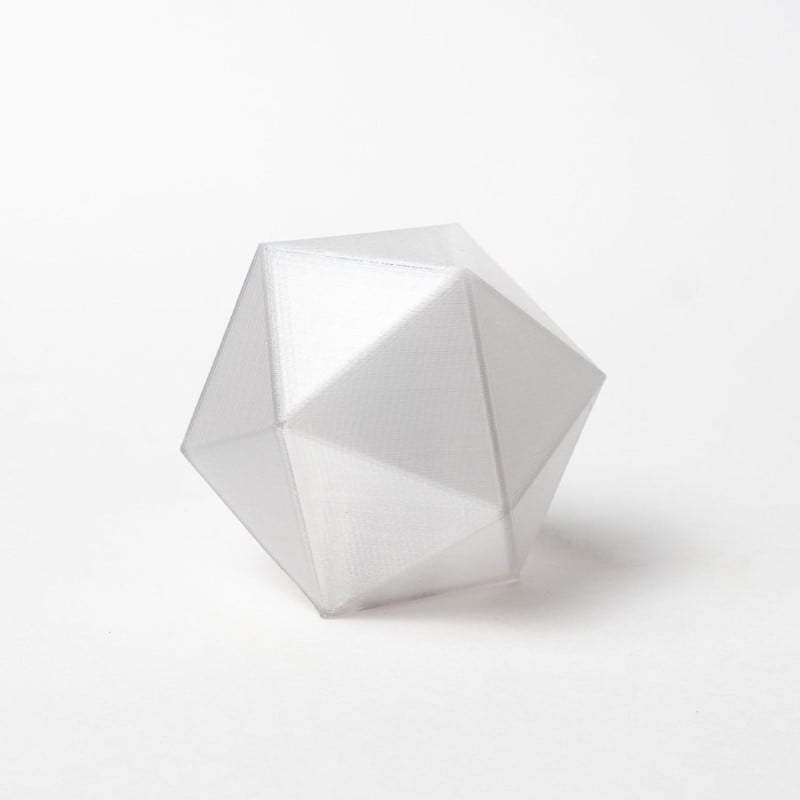
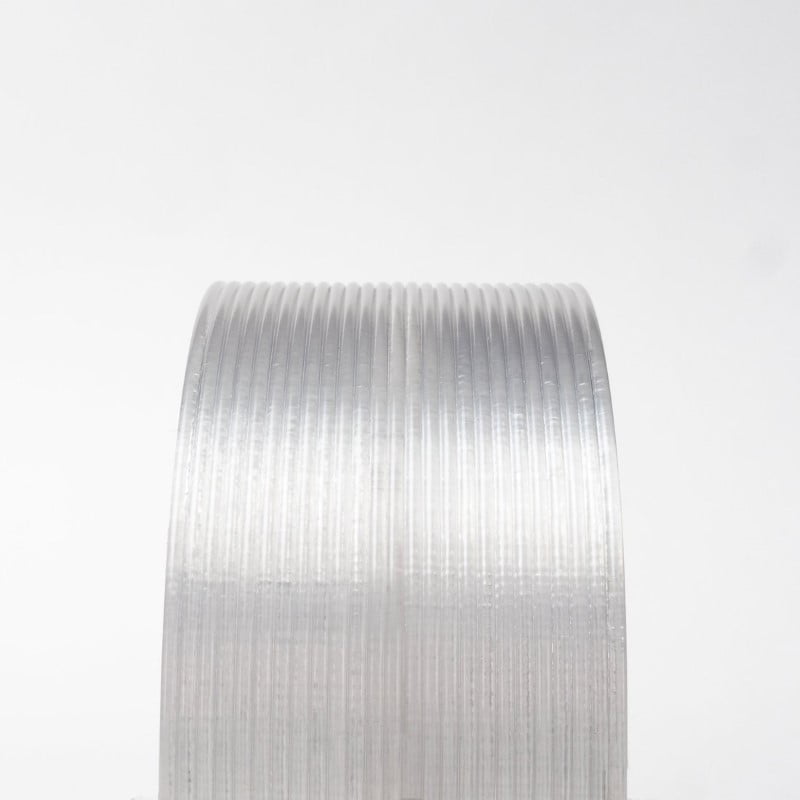

We've created this page to bring you a premium PLA and HTPLA printing experience that rivals our premium material. Follow below to improve your 3D printing experience. In other words, here's your shortcut to awesomeness with pasta. If at the end of this document you have questions or need assistance, please contact us at [email protected].
Loose coils can be very tricky to manage. Going cowboy on your spool handling can quickly end up in a frustrating, tangled mess. Keep your loose coils wrangled with a spool holder like masterspool for a more trouble-free experience. Find out more about loose coil handling in Keith's blog post.
And for spooled filament, never let go of the loose end. When not in the printer extruder, tuck it away in the cardboard spool's corrugation! Also, avoid sharp bends and excessive force when loading filament into your printer.
At Proto-pasta, we make high quality filament. We aspire to make exceptional results easy, but a positive result is very much dependent on your hardware, set-up, adjustments, and process parameters. Matching hardware with process and material for a positive experience is not always straight-forward, but you can start by pairing the following settings with your printer for a good starting point, then tune or troubleshoot as required.
Volume flow rate together with temperature dictates how melted the material is. This is hardware & condition dependent based on hot end, nozzle & extruder type, material & manufacturer as well as layer fan type, position & settings. Extrusion width, layer thickness & speed changes affect volume flow which may change required/desired temperature.
Post your prints & tag us @Proto_pasta on Twitter and Instagram. Need more help? Consider typical pitfalls and fixes below.
We visited Joel and ended up with a helpful video on the subject:

Para uma correcta manutenção da sua impressora 3D, recomendamos sempre que trocar de material de filamento 3D, a efectuar uma purga com filamento especial de limpeza.
Desta forma garante que não ficam vestígios de material nas paredes do nozzle, evitando o acumular de crosta que é criado sempre que efectua trocas de material.
Com este produto evita problema como "clogs" e "jams" e fará com que o seu nozzle mantenha-se sempre limpo, durando muito mais tempo.
Poderá encontrar a partir de 1.49€ no seguinte LINK

Para obter maior aderência à superfície da sua impressora 3D recomendamos a aplicar 3DLAC na base da plataforma.
Poderá encontrar no seguinte LINK

Este material é altamente higroscópico, absorvendo rapidamente a humidade do ar passados poucos minutos após aberto, impossibilitando desta forma a correcta impressão 3D do mesmo. O resultado das impressões 3D de materiais com humidade tendem a ser frágeis e de acabamento irregular ou em certos casos, torna-se simplesmente impossíveis de imprimir.
Deverá de usar soluções de caixas fechadas com dessecante como sílica ou caixas próprias secadoras de filamento.
Poderá encontrar no seguinte LINK
Download:
Technical and Safety Data Sheet
1kg- Rolo
PETG Back-to-basics Clear 100% Post-industrial Recycled - Cor
1.75mm (+-0.05mm) - Espessura / Tolerância de diâmetro
Fácil - Facilidade de Impressão

ProtoPasta é uma empresa situada nos Estados Unidos da América, de produção de filamentos para impressão 3D de alta qualidade.
Caracterizada pelos rolos feitos em cartão, esta marca é mundialmente famosa por ser especializada em materiais como PLA e ABS modificados com outros materiais, como o PLA Magnético; o PLA Condutivo; PLA de fibra de carbono; HTPLA de cobre, latão ou bronze; ou o ABS-PC.


No sparkles or fancy finishes here, just high clarity SK GE300 PETG (also know as CPE or co-polyester) resin extruded into filament and spooled onto cardboard spools to minimize environmental impact and maximize value.
Many filaments are wound onto wasteful plastic spools because it's cheap and easy, but cardboard is sturdy enough for single use, saves shipping weight, and is easily recycled when done!
Protopasta filament is first dried, then extruded without moisture using air cooling for exceptional quality.
Minimal waste, no water use, and no additives because less is more when meeting basic needs.



We've created this page to bring you a premium PLA and HTPLA printing experience that rivals our premium material. Follow below to improve your 3D printing experience. In other words, here's your shortcut to awesomeness with pasta. If at the end of this document you have questions or need assistance, please contact us at [email protected].
Loose coils can be very tricky to manage. Going cowboy on your spool handling can quickly end up in a frustrating, tangled mess. Keep your loose coils wrangled with a spool holder like masterspool for a more trouble-free experience. Find out more about loose coil handling in Keith's blog post.
And for spooled filament, never let go of the loose end. When not in the printer extruder, tuck it away in the cardboard spool's corrugation! Also, avoid sharp bends and excessive force when loading filament into your printer.
At Proto-pasta, we make high quality filament. We aspire to make exceptional results easy, but a positive result is very much dependent on your hardware, set-up, adjustments, and process parameters. Matching hardware with process and material for a positive experience is not always straight-forward, but you can start by pairing the following settings with your printer for a good starting point, then tune or troubleshoot as required.
Volume flow rate together with temperature dictates how melted the material is. This is hardware & condition dependent based on hot end, nozzle & extruder type, material & manufacturer as well as layer fan type, position & settings. Extrusion width, layer thickness & speed changes affect volume flow which may change required/desired temperature.
Post your prints & tag us @Proto_pasta on Twitter and Instagram. Need more help? Consider typical pitfalls and fixes below.
We visited Joel and ended up with a helpful video on the subject:

Para uma correcta manutenção da sua impressora 3D, recomendamos sempre que trocar de material de filamento 3D, a efectuar uma purga com filamento especial de limpeza.
Desta forma garante que não ficam vestígios de material nas paredes do nozzle, evitando o acumular de crosta que é criado sempre que efectua trocas de material.
Com este produto evita problema como "clogs" e "jams" e fará com que o seu nozzle mantenha-se sempre limpo, durando muito mais tempo.
Poderá encontrar a partir de 1.49€ no seguinte LINK

Para obter maior aderência à superfície da sua impressora 3D recomendamos a aplicar 3DLAC na base da plataforma.
Poderá encontrar no seguinte LINK

Este material é altamente higroscópico, absorvendo rapidamente a humidade do ar passados poucos minutos após aberto, impossibilitando desta forma a correcta impressão 3D do mesmo. O resultado das impressões 3D de materiais com humidade tendem a ser frágeis e de acabamento irregular ou em certos casos, torna-se simplesmente impossíveis de imprimir.
Deverá de usar soluções de caixas fechadas com dessecante como sílica ou caixas próprias secadoras de filamento.
Poderá encontrar no seguinte LINK
Download:
Technical and Safety Data Sheet
1kg- Rolo
PETG Back-to-basics Clear GE300 - Cor
1.75mm (+-0.05mm) - Espessura / Tolerância de diâmetro
Fácil - Facilidade de Impressão
Procura um bico indestrutível?
Experimente o Vanadium Nozzle da marca Slice Engineering (USA).
GARANTIA VITALICIA contra abrasão.
Com uma classificação mínima de dureza 64 Rockwell C (Vickers HV 910), é praticamente impossível riscar o mesmo com qualquer tipo de filamento 3D existente no mercado.
Ideal para impressão 3D com materiais abrasivos como filamento de Carbono, Glow Brilha no escuro, Bronze, prata, metalizados, etc.
O Vanadium Nozzle possui um revestimento polifóbico repelente para reduzir o acúmulo de plástico no bico.
Vantagens:
- Menos acúmulo, principalmente de materiais pegajosos e cheios no cone do bico
- Confiabilidade aprimorada da primeira camada; o revestimento liso tem uma tendência reduzida a "arrastar" o material, principalmente em cantos afiados onde as faixas podem descascar
- Camadas superiores lisas e lisas com acabamento vítreo como resultado da disposição suave do material
- Limpeza mais fácil dos bicos, o pouco material que adere é facilmente limpo com uma toalha de papel deixando um bocal muito limpo.
Compatível com E3d V6, Mosquito, etc
